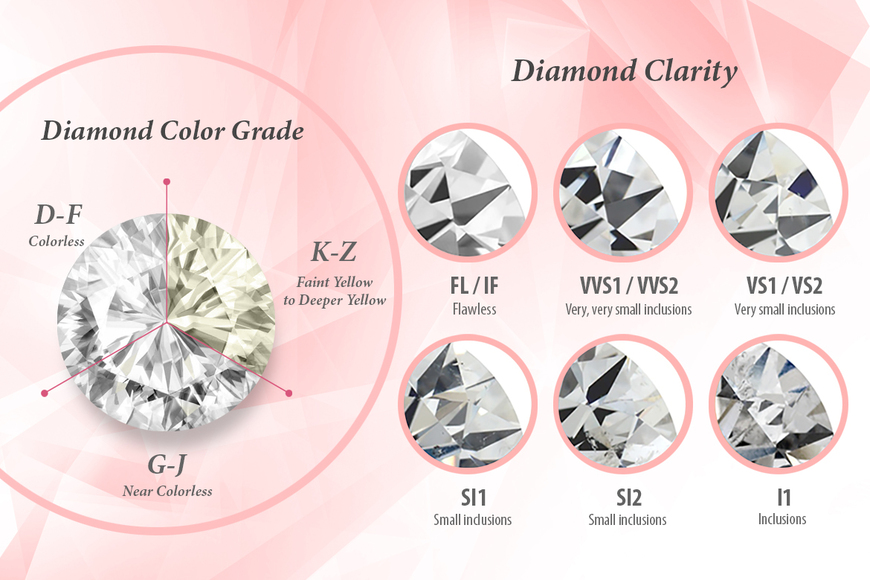The 4Cs Of Diamonds
Each diamond is unique and each has specific qualities that establish its value. You’ve probably heard about the 4Cs of a diamond, and as you know it stands for diamond cut, color, clarity and carat weight.
Color
The color of gem-quality diamonds occurs in many hues. In the range from colorless to light yellow or light brown. Colorless diamonds are the rarest. Other natural colors (blue, red, pink for example) are known as “fancy,” and their color grading is different than from white colorless diamonds.
A FEW THINGS TO KNOW ABOUT DIAMOND COLOR IN GENERAL.
- The absence of color is generally one of several indicators of good value.
- The color grade of a diamond should always be determined by a grading professional.
- The grade and value of diamonds differ between colored and colorless diamonds.
- Diamond colors are graded from D to Z, with most diamonds used in jewelry falling somewhere into the D to M range.
- The setting of the ring can play a role in the perception and view of the color.
Clarity
Diamonds can have internal characteristics known as inclusions or external characteristics known as blemishes. Diamond Clarity Refers to the Absence of Inclusions and Blemishes.
The GIA Diamond Clarity Scale has 6 categories, some of which are divided, for a total of 11 specific grades.
- Flawless (FL) No inclusions and no blemishes visible under 10x magnification
- Internally Flawless (IF) No inclusions visible under 10x magnification
- Very, Very Slightly Included (VVS1 and VVS2) Inclusions so slight they are difficult for a skilled grader to see under 10x magnification
- Very Slightly Included (VS1 and VS2) Inclusions are observed with effort under 10x magnification but can be characterized as minor
- Slightly Included (SI1 and SI2) Inclusions are noticeable under 10x magnification
- Included (I1, I2, and I3) Inclusions are obvious under 10x magnification which may affect transparency and brilliance.
Cut
Of all the 4Cs, diamond cut has the greatest effect on a diamond’s beauty. We often think of a diamond’s cut as shape (round, heart, oval, marquise, pear), but what diamond cut actually does mean how well a diamond’s facets interact with light. The more precise the diamond is cut, the more captivating the diamond is to the eye.
Available Cut Grades
- Ideal
- Excellent
- Very Good
- Good
- Fair
- Poor
Carat
Carat is the unit of measurement for the physical weight of diamonds. One carat equals 0.200 grams or 1/5 gram and is subdivided into 100. Tips when buying diamond
- Choose carat weight to suit the wearer’s fingers - when buying a diamond ring you should choose a diamond carat weight that suits the wearer's fingers.
- Consider size vs budget - Distribute your budget against diamond carat weight as well as other characteristics. A large diamond with poor clarity and colour unlikely to look as good as something with a lower carat but higher quality.
- Explore all carat sizes – Lifestyle Fine Jewelry has a wide and beautiful collection of diamond jewelry. Ensure to explore our collections and you can also customize designs according to your liking.


